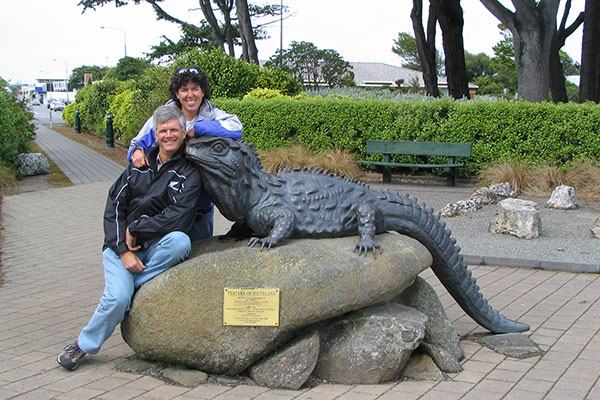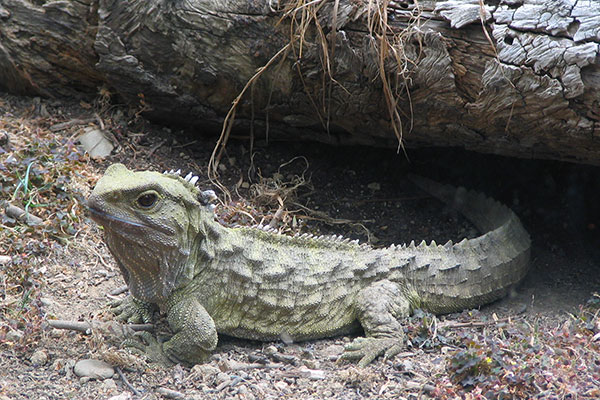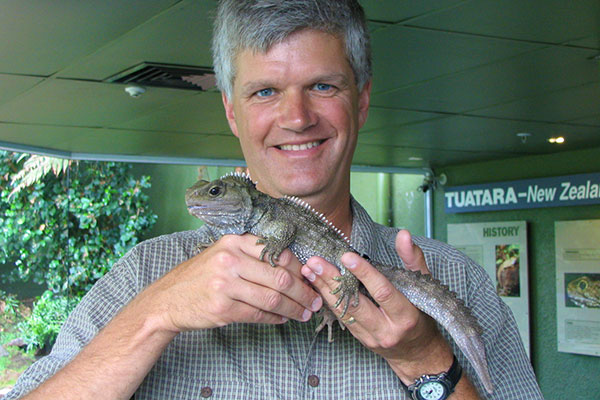In 2005 my wife and I traveled with some friends to New Zealand and looked in vain for tuatara on Tiritiri Matangi, one of the extremely few islands that tourists are allowed to visit where wild tuatara live. Tragically, we did not see any wild tuatara. As a consolation prize, we visited the Tuatarium (!) at the Southland Museum and Art Gallery in Invercargill, where research on captive tuatara has been going on for decades.
The first thing one notices about the Tuatarium is this excellent statue in front:

Inside, there are — and this should not come as a complete shock — actual live tuatara! And not just any old tuatara, but the world's most famous old tuatara, Henry. Henry has been at the Southland Museum since 1972. I remember Henry from seeing his photo in Archie Carr's The Reptiles entry in the Life Nature Library book series when I was a kid. He got worldwide attention when he sired offspring at the age of 111 (did I mention that tuatara live a long time?). Without further ado, here's Henry:

We happened to be visiting the Tuatarium at the same time as some group of zoo-related folks who were getting a behind-the-scenes tour. As part of this tour, the Tuatarium curator brought out one of the tuatara and showed it around up close and personal. I am unlikely to ever see a wild tuatara, but I did get to hold one!
